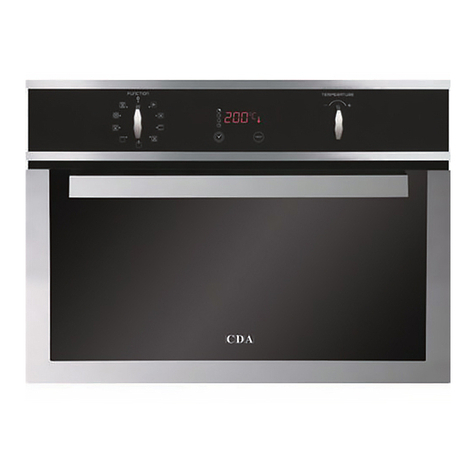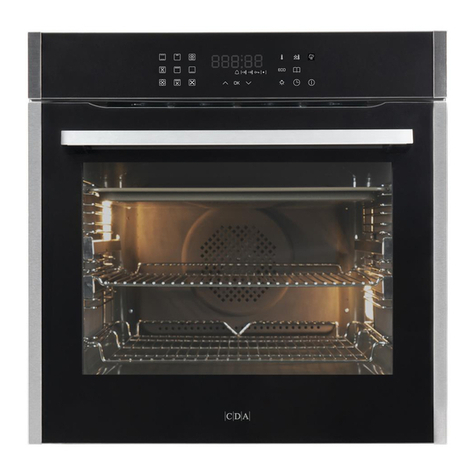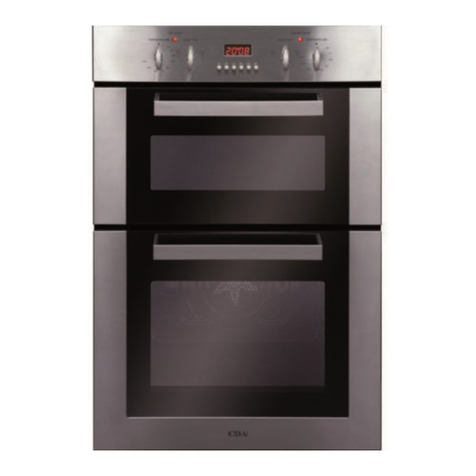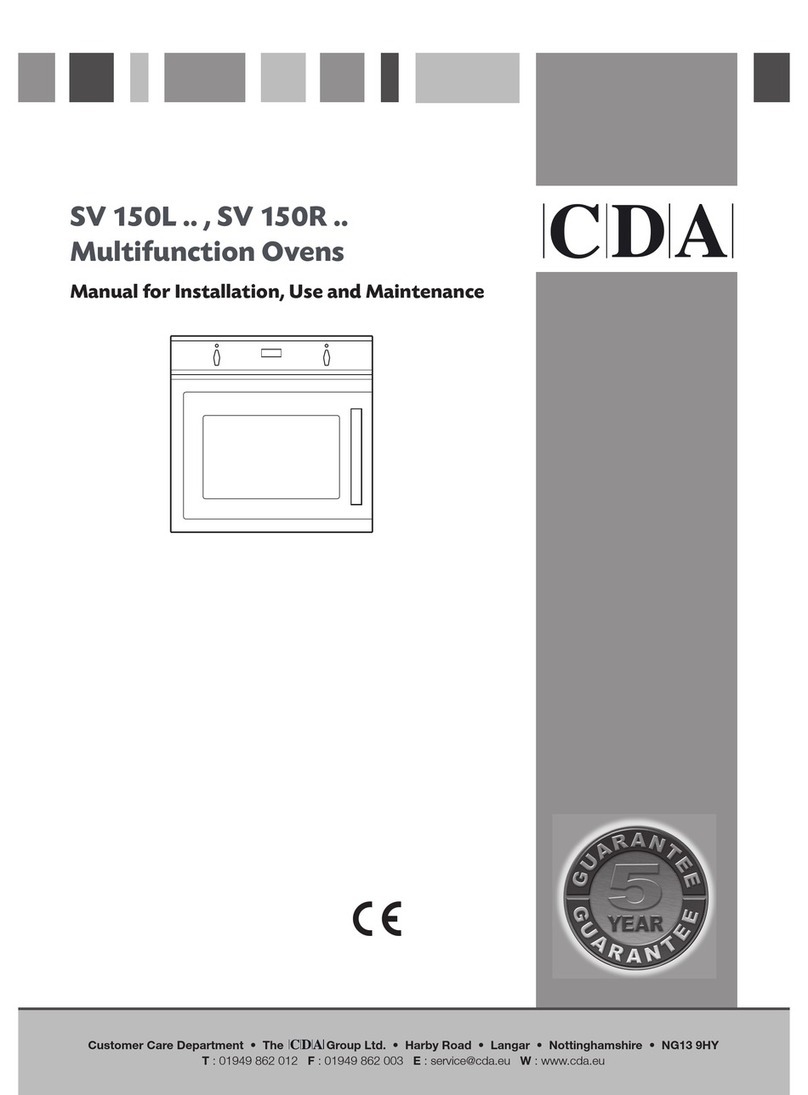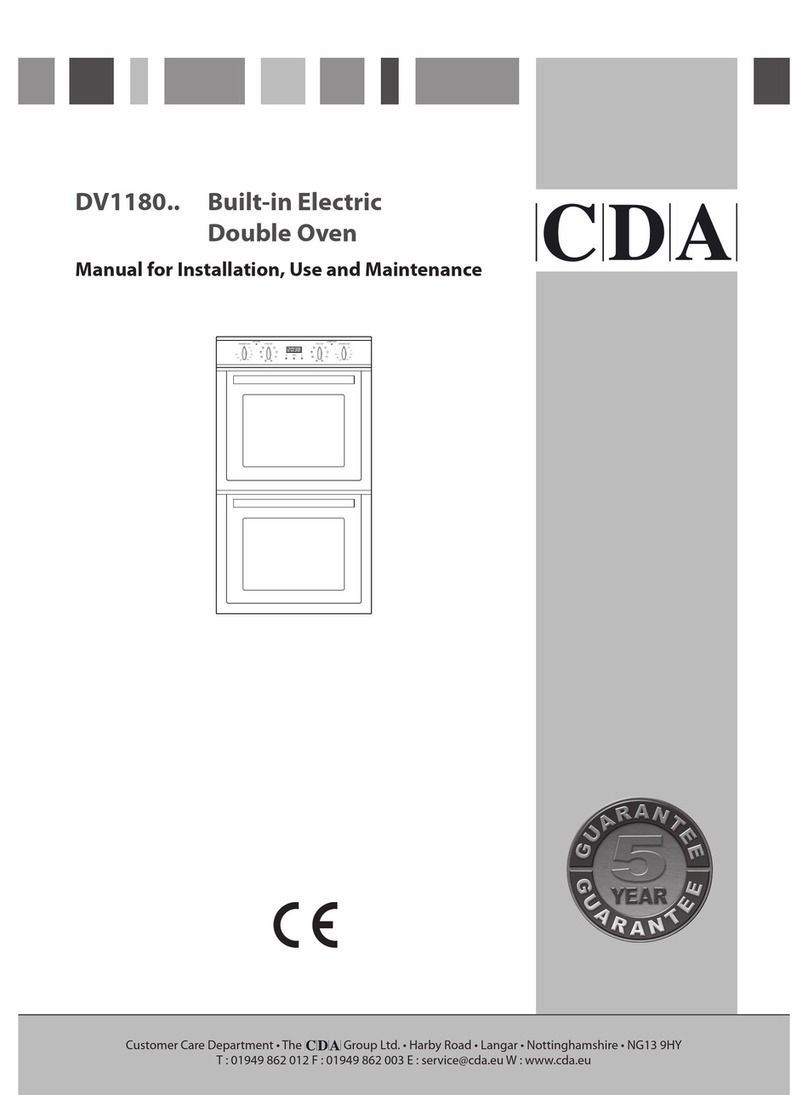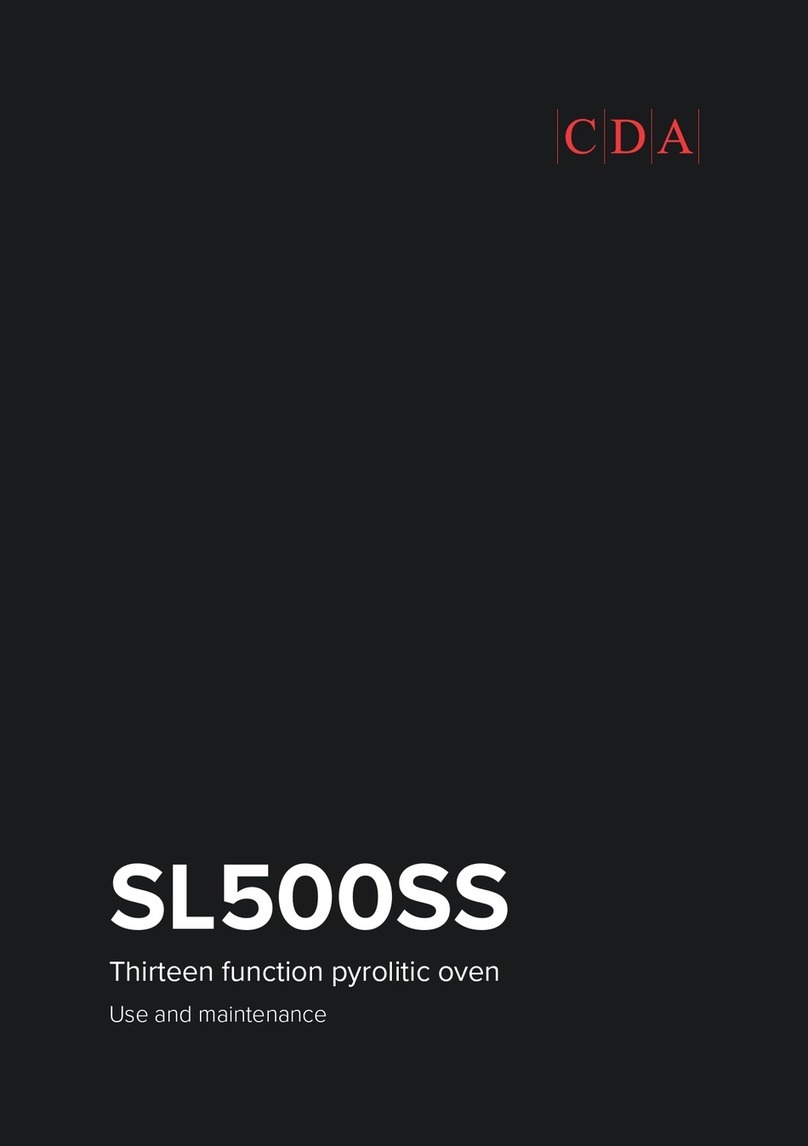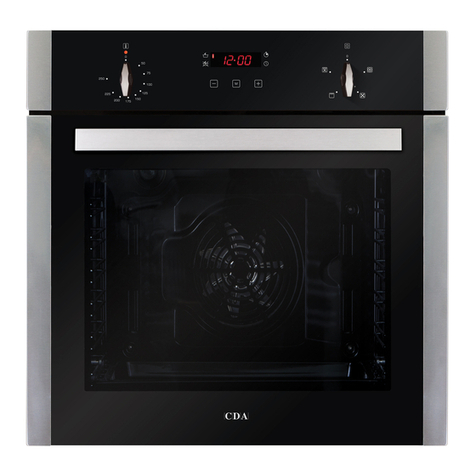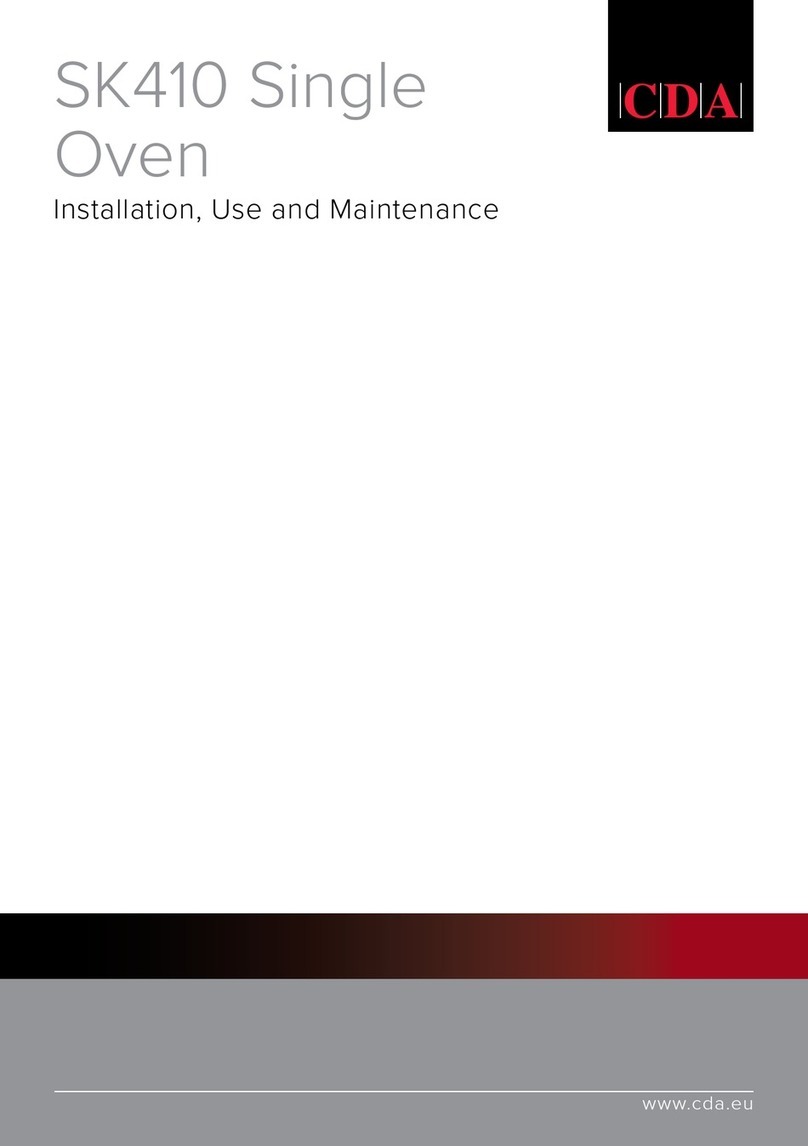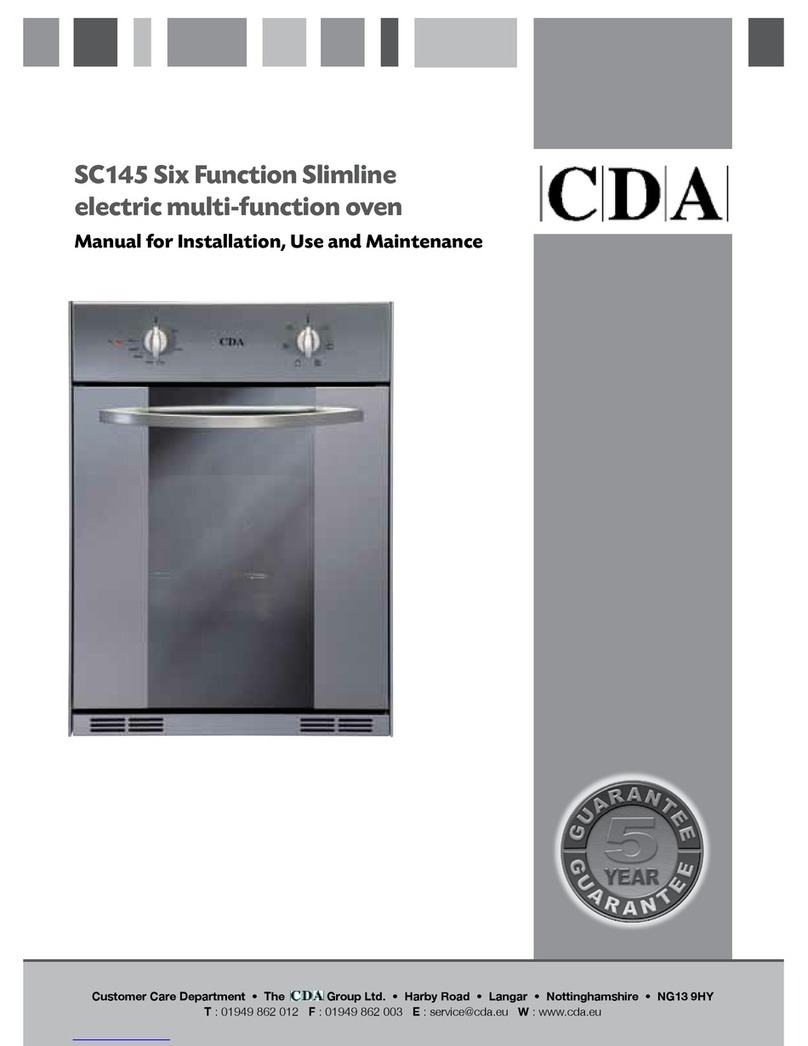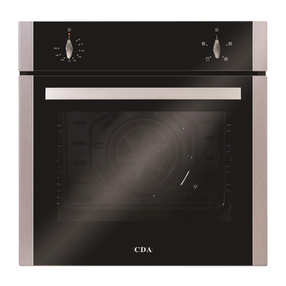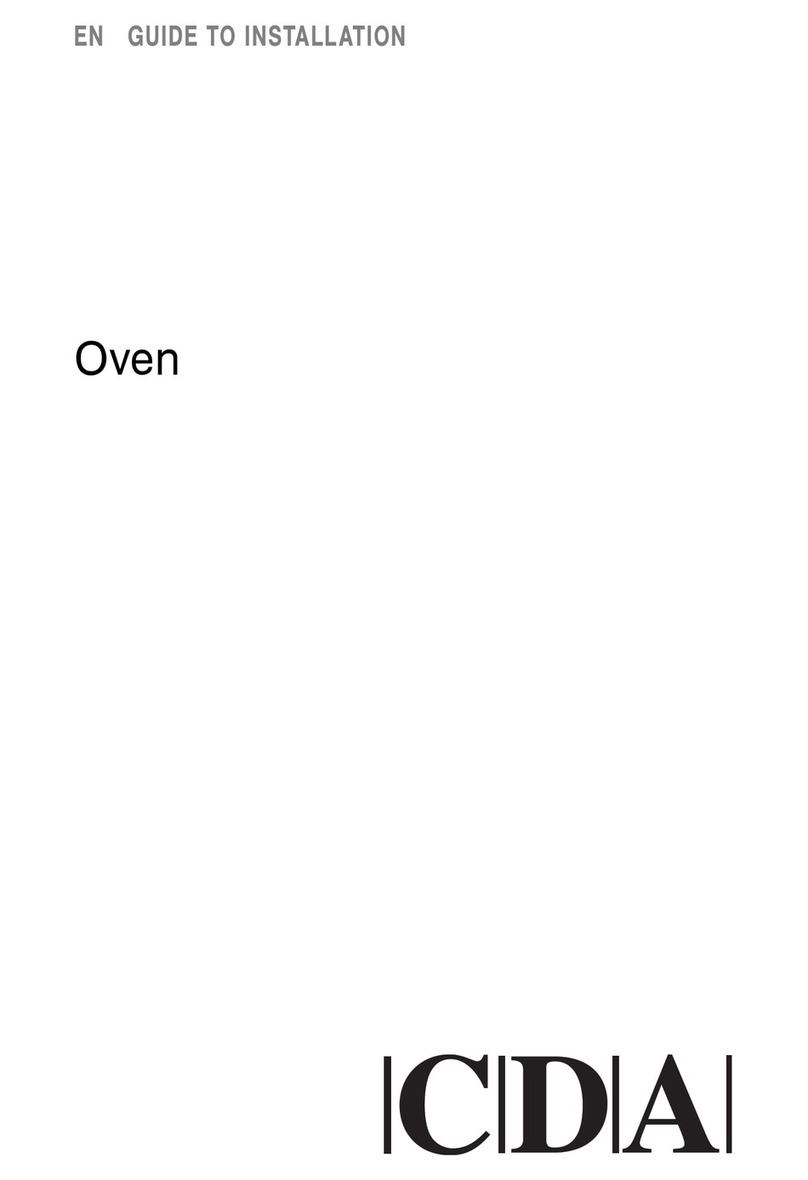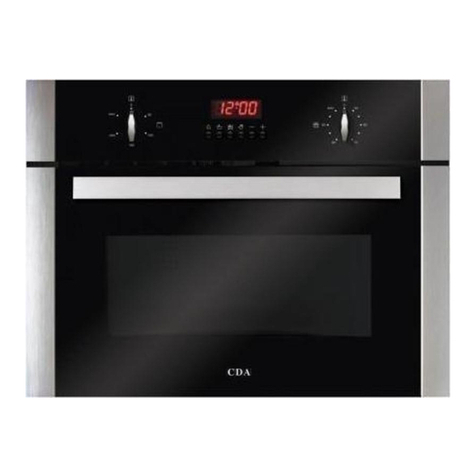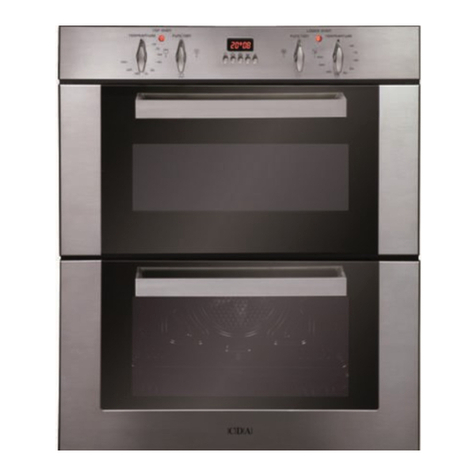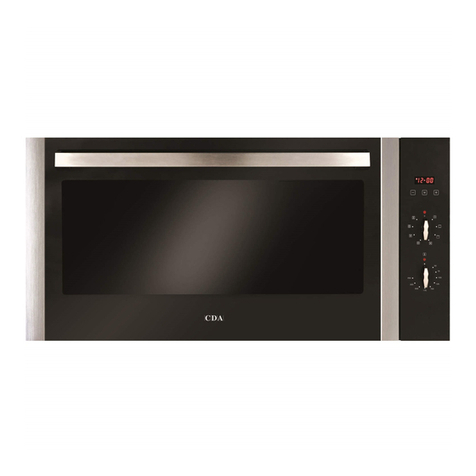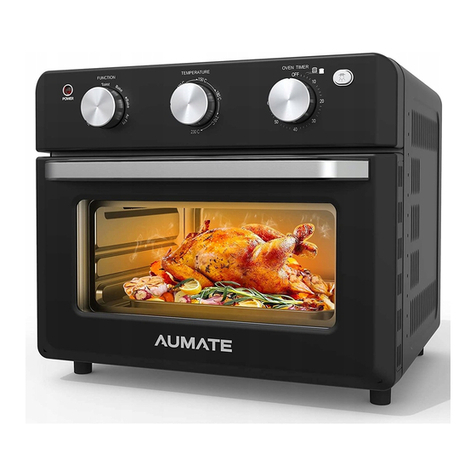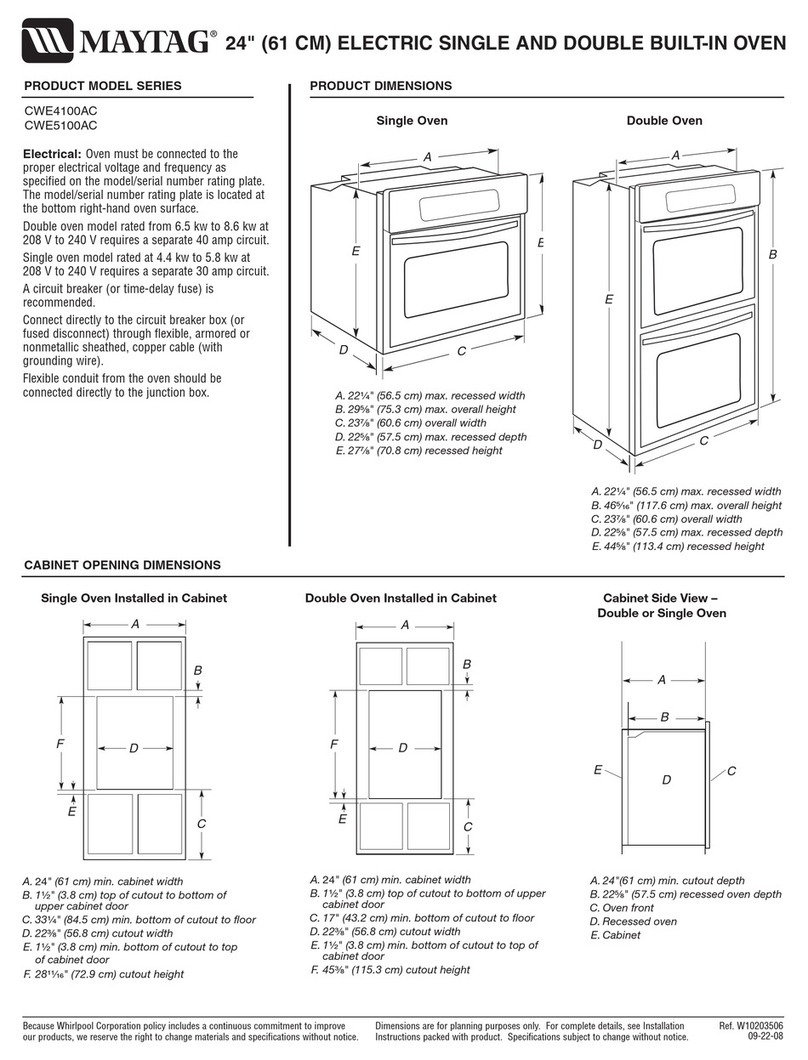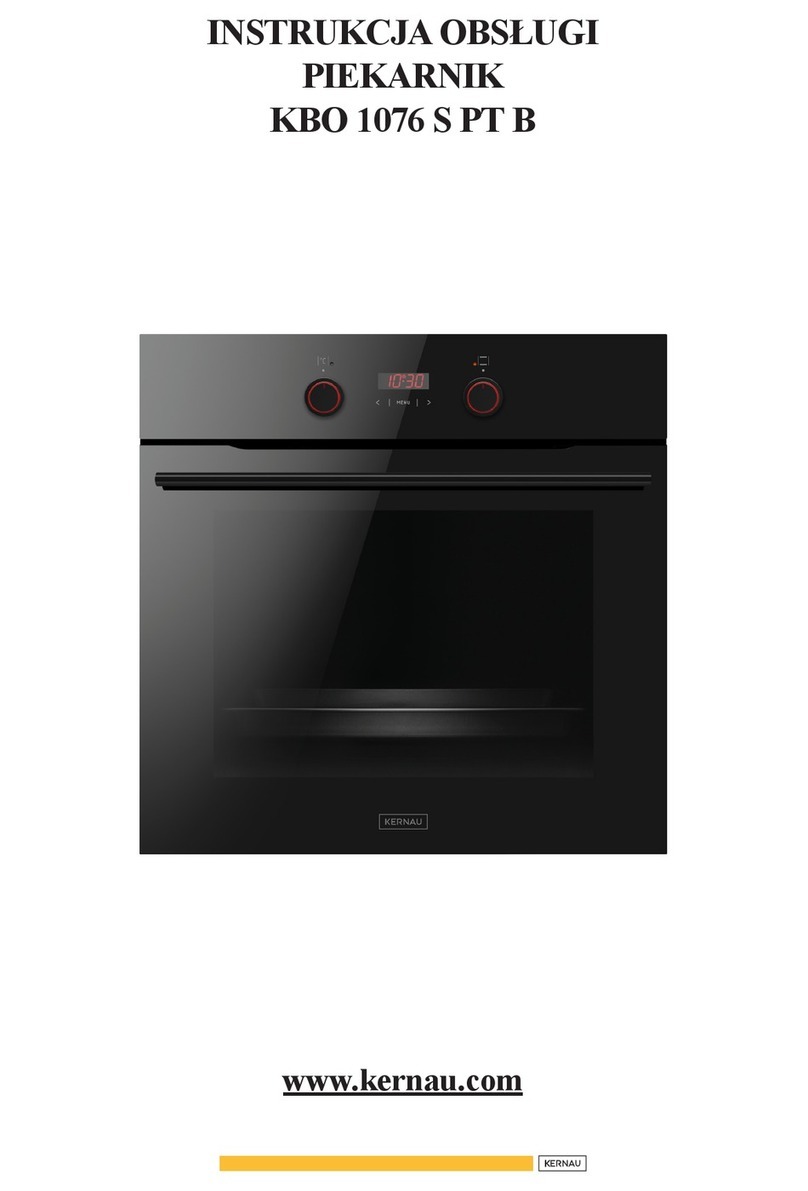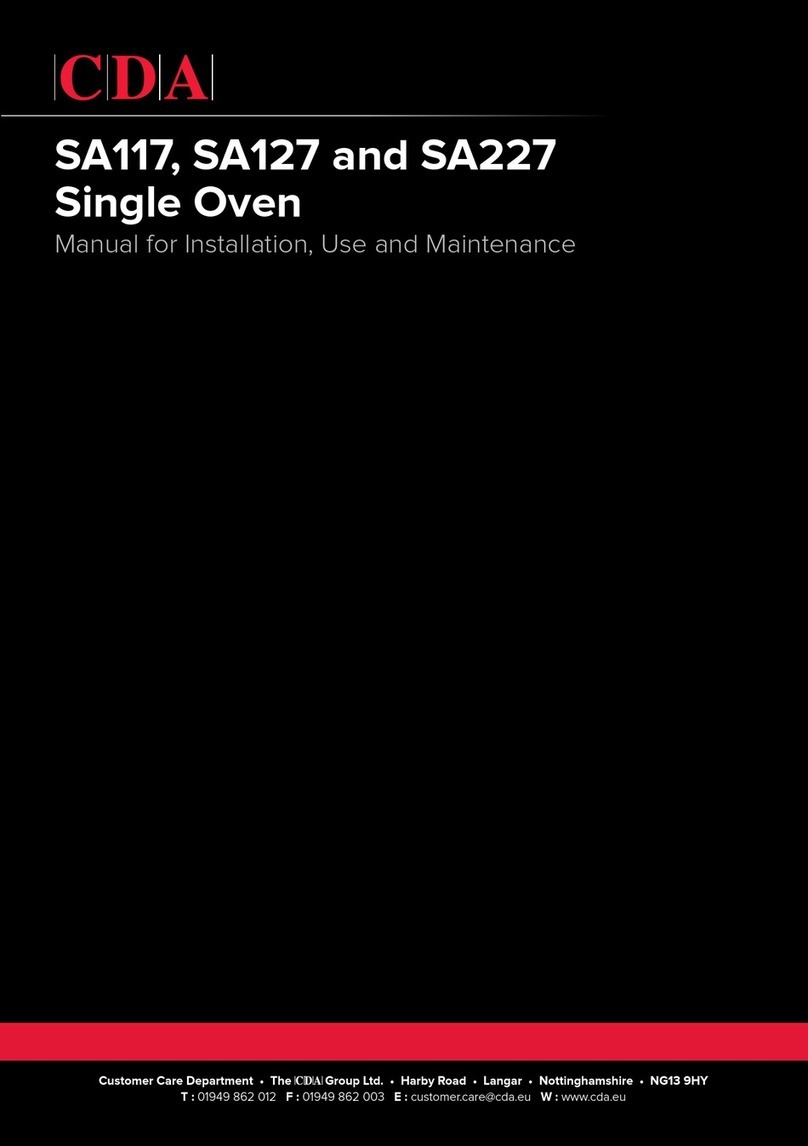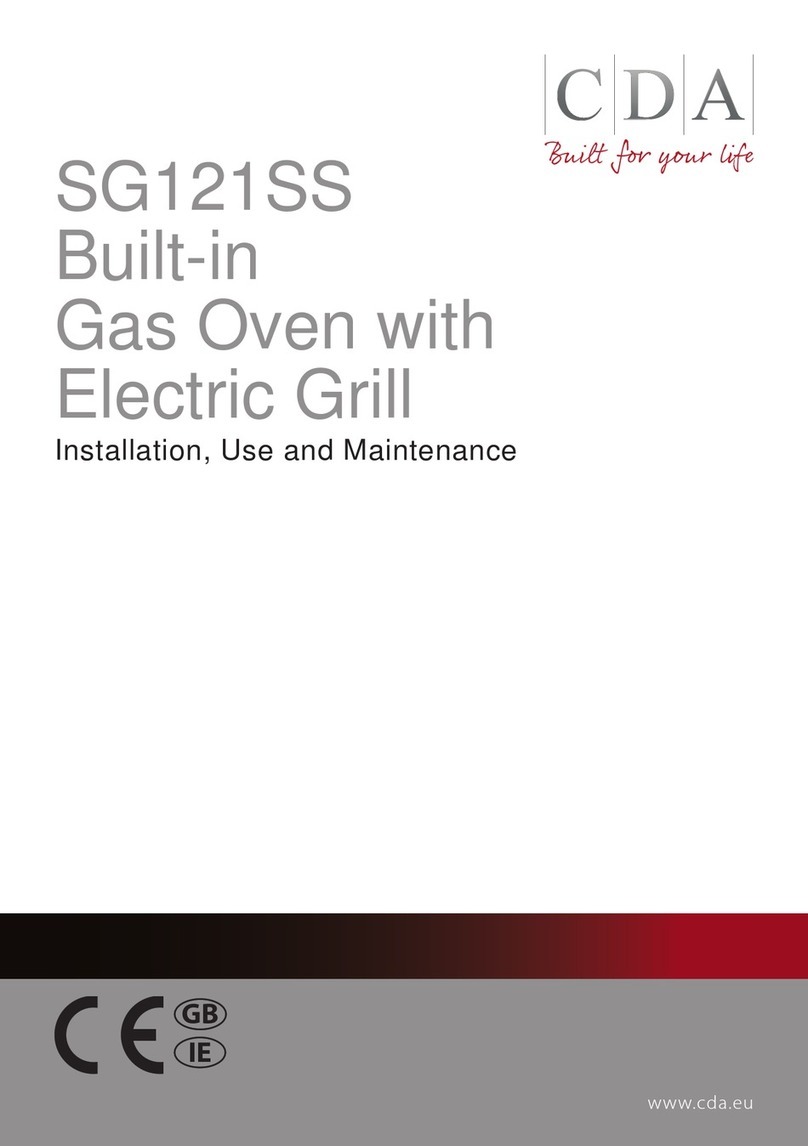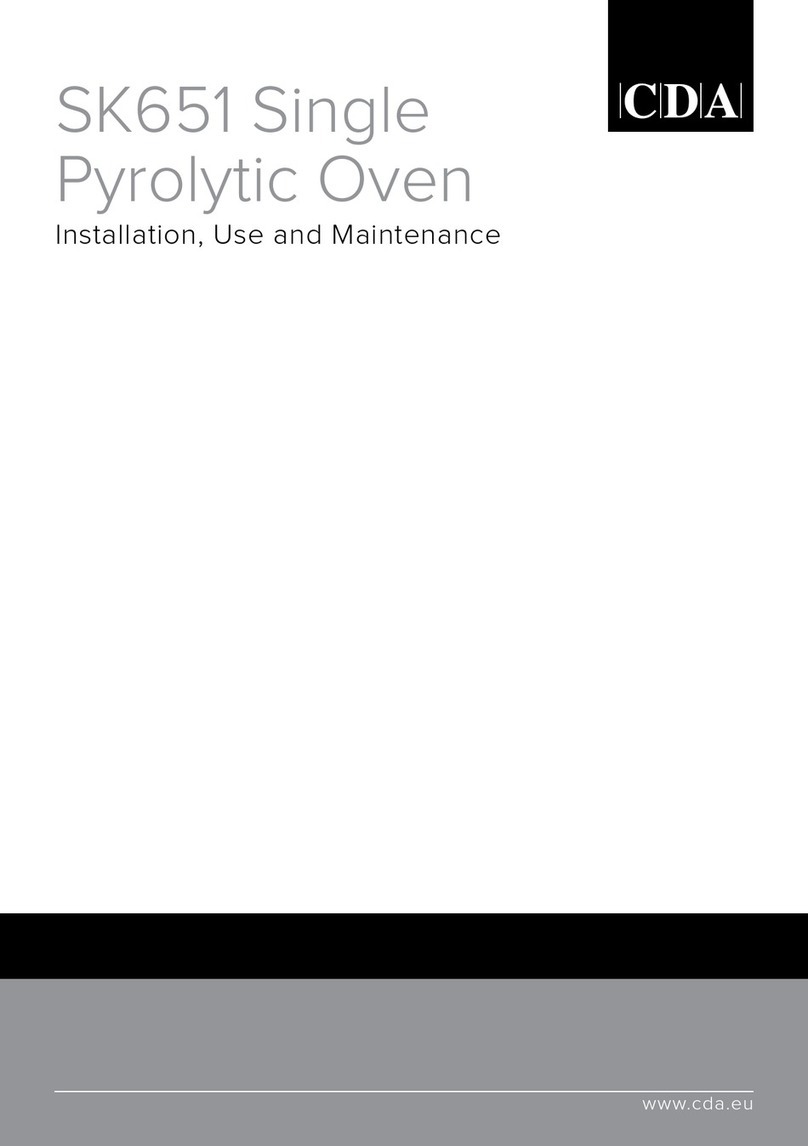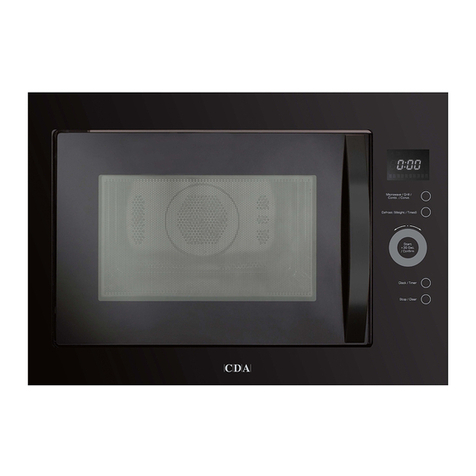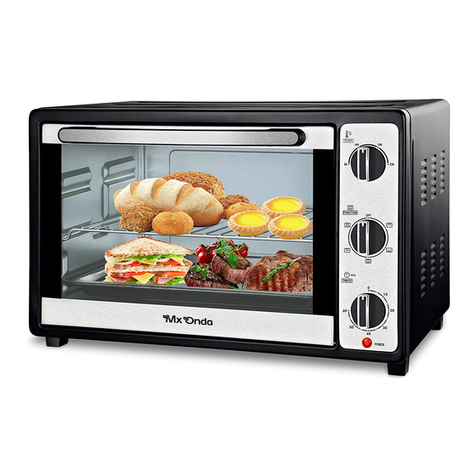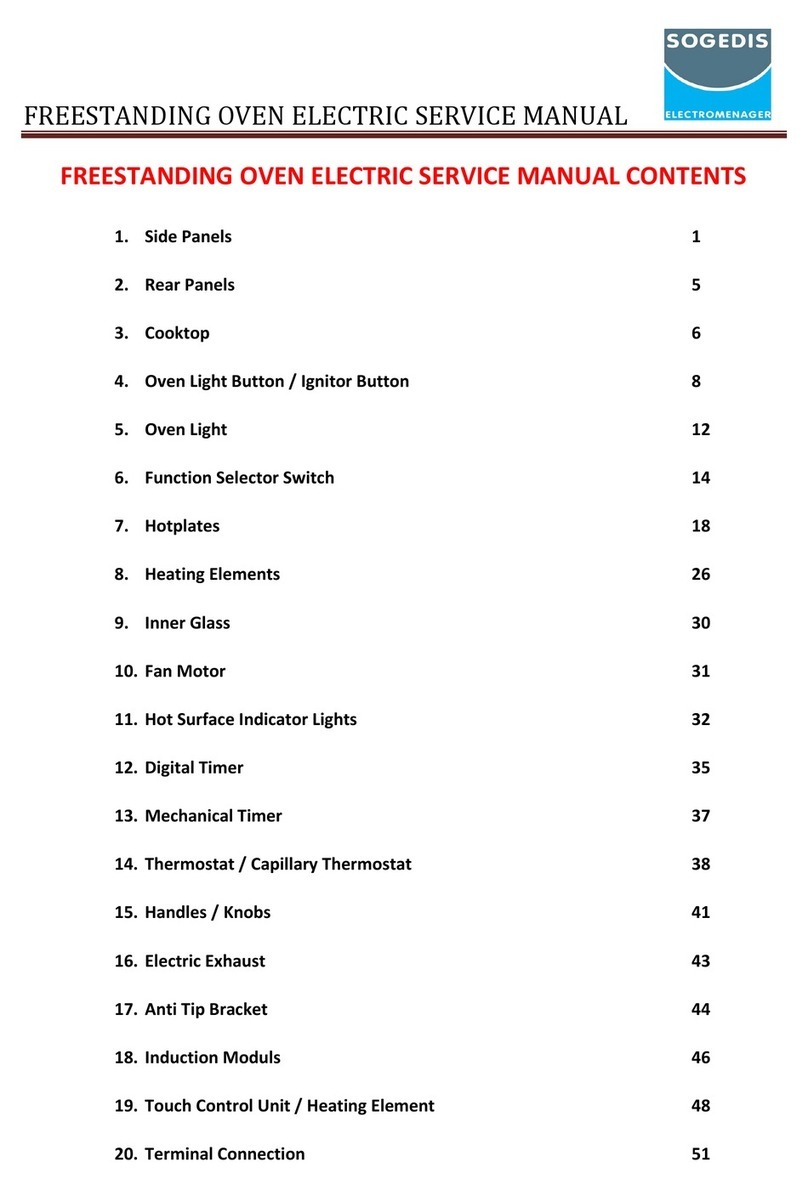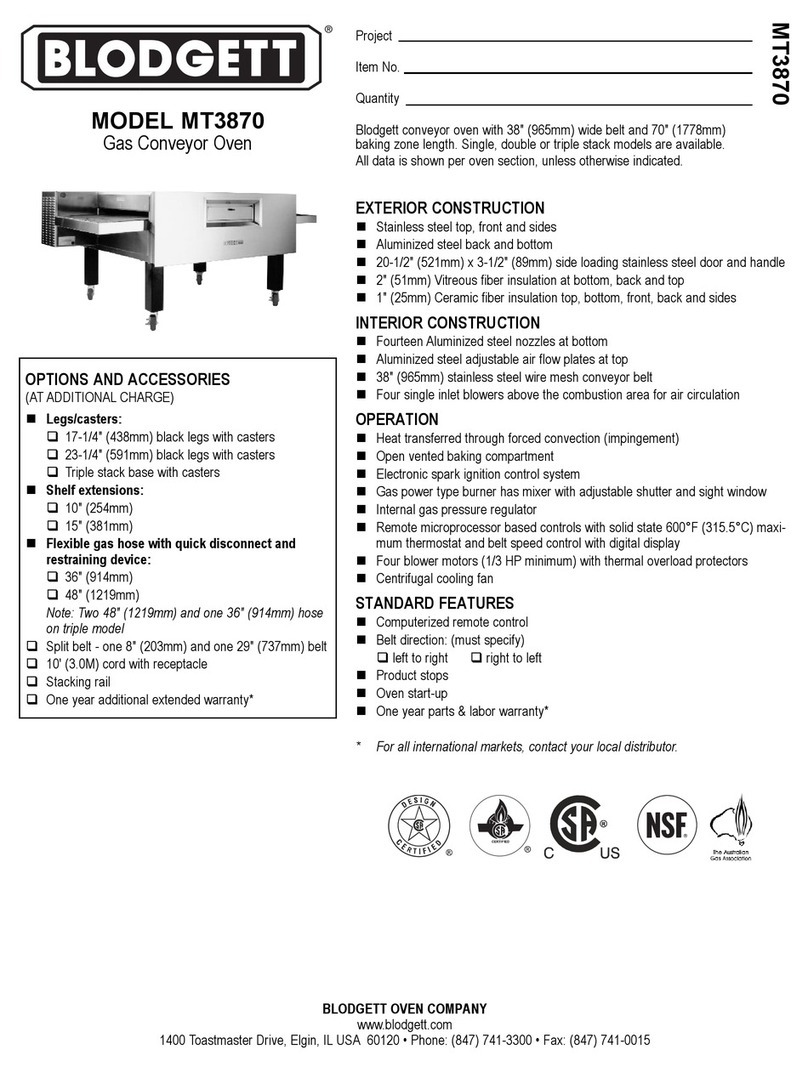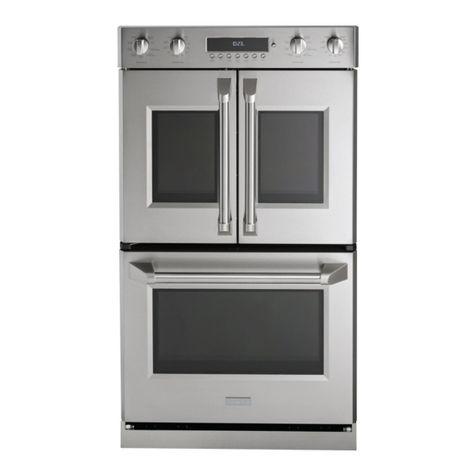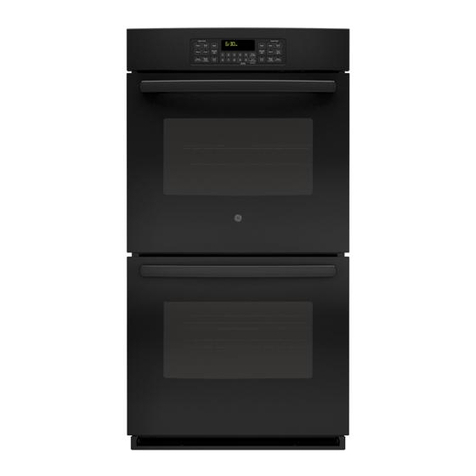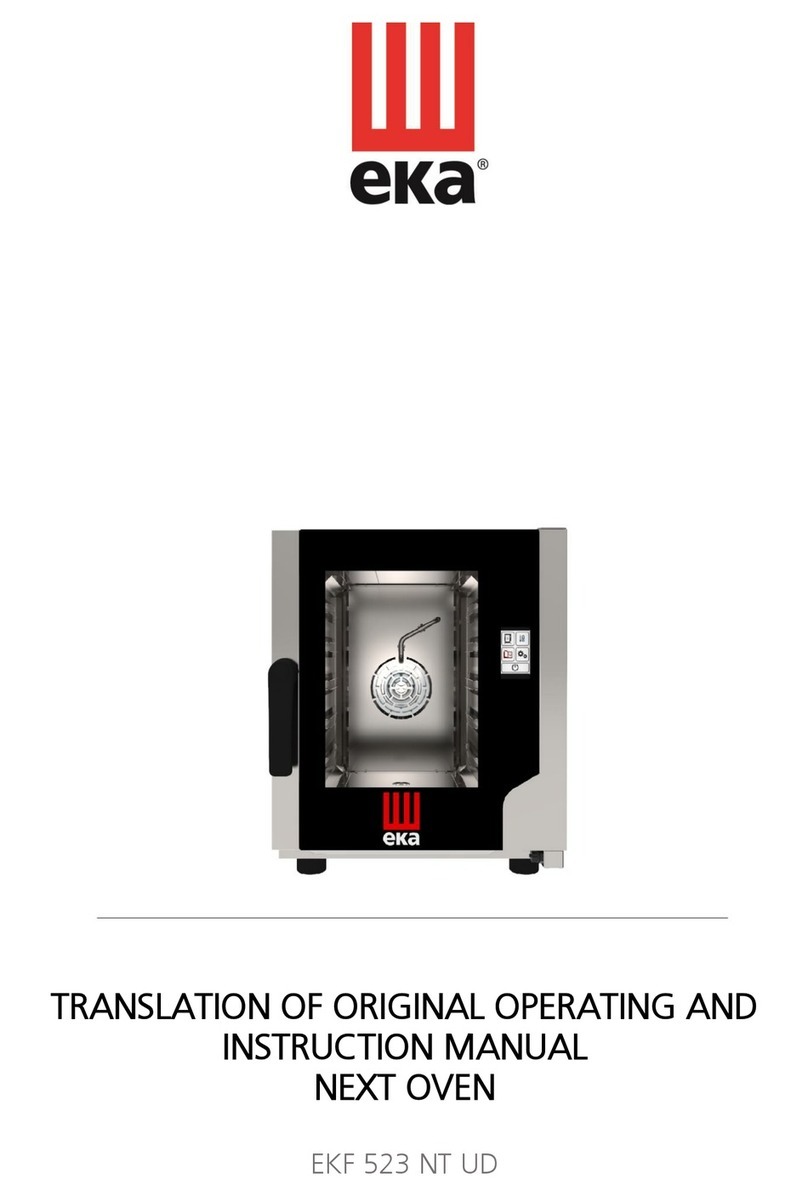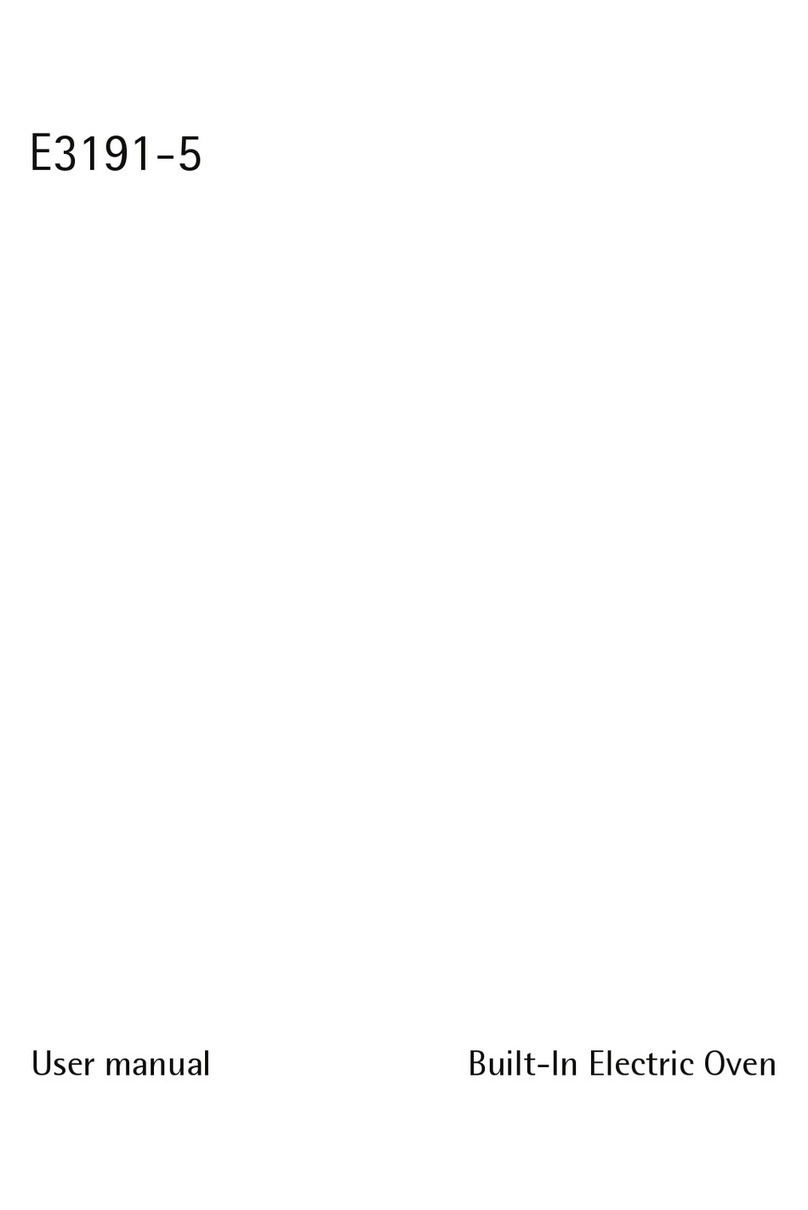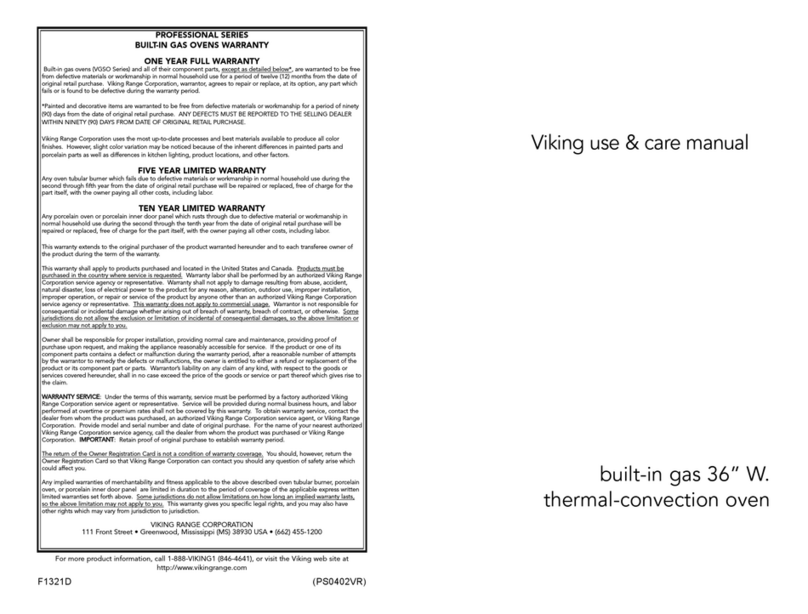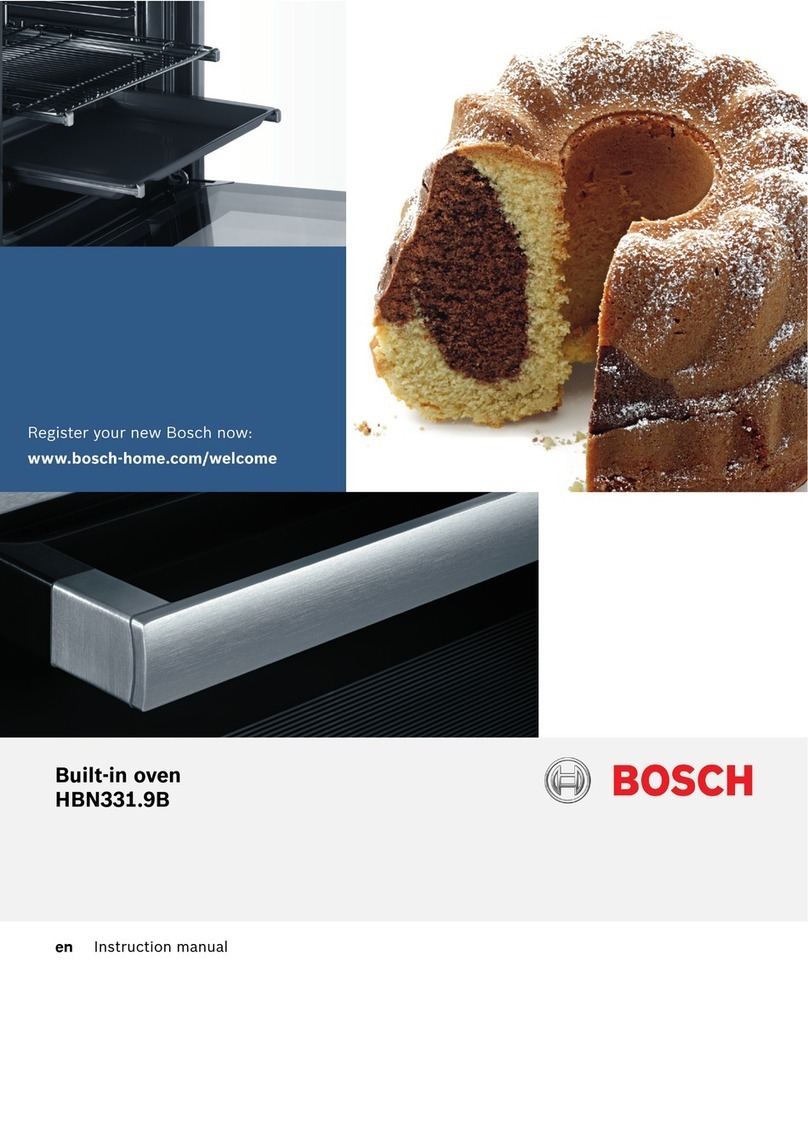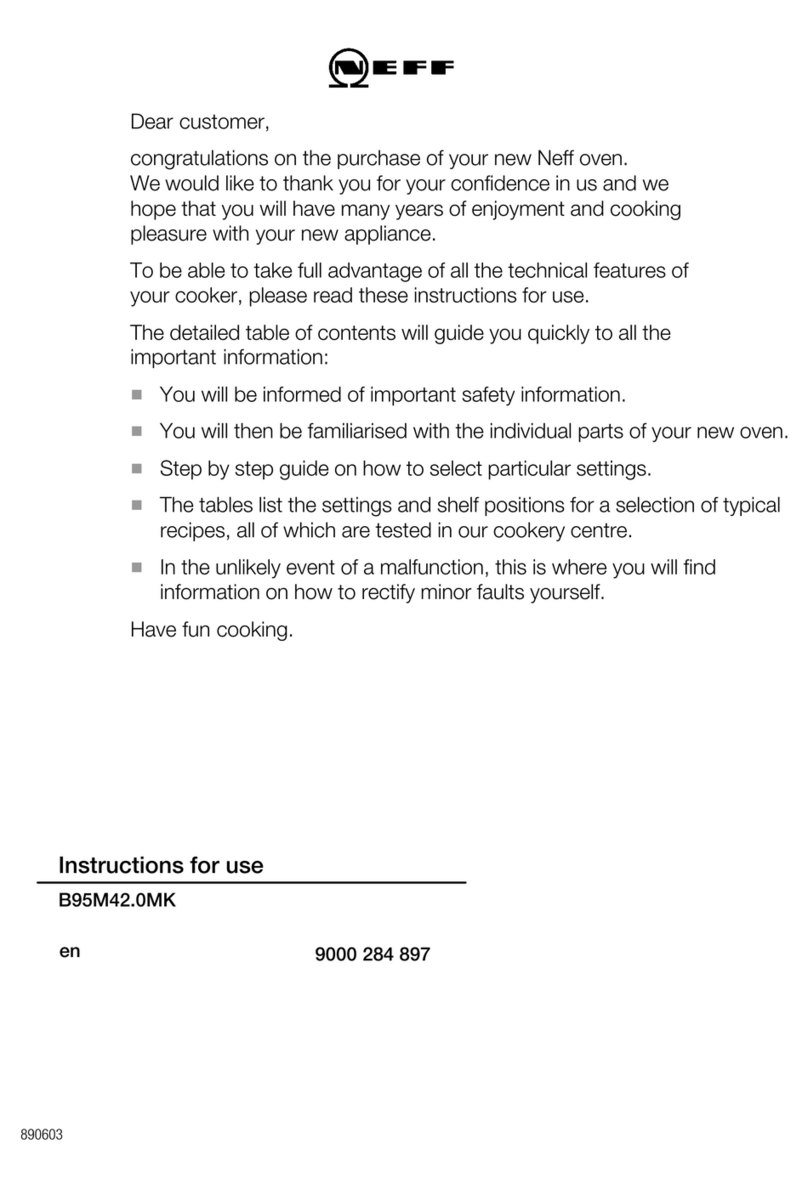4
Important Safeguards and Recommendations
− Do not carry out any cleaning or maintenance without rst disconnecting the appliance from the
electrical supply.
− During and after use of the oven, certain parts will become very hot. Do not touch hot parts.
− After use always ensure that the controls are in the OFF position ( - ).
− Household appliances are not intended to be played with by children.
− Keep children away from the oven during use.
− Children, or persons with a disability which limits their ability to use the appliance, should have a
responsible person to instruct them in its use. The instructor should be satised that they can use
the appliance without danger to themselves or their surroundings.
− WARNING
When correctly installed, your product meets all safety requirements laid down for this type of
product category. However special care should be taken around the rear or the underneath of the
appliance as these areas are not designed or intended to be touched and may contain sharp or
rough edges, that may cause injury.
− Fire Risk! Do not store inammable materials inside the oven.
− Always use oven gloves when removing the shelves and food trays from the oven whilst hot.
− Clean the oven regularly and do not allow fat or oils to build up in the oven base or trays. Remove
spillages as soon as they occur.
− Do not line the oven walls with aluminium foil. Do not place baking trays or the drip tray on the
base of the oven chamber.
− Always stand back from the oven when opening the oven door to allow steam and hot air to esca-
pe before removing the food.
− Do not hang towels, dishcloths or other items on the oven or its handle – as this could be a re
hazard.
− Make sure that electrical cords connecting other appliances in the proximity cannot become en-
trapped in the oven door.
− Before disposing of an unwanted appliance, it is recommended that it is made inoperative and
that all potentially hazardous parts are made harmless.
− Important: This appliance has been designed for domestic use only. The appliance is NOT suitable
for use within a semi-commercial, commercial or communal environment.
− Safe food handling: leave food in the oven for as short a time as possible before and after coo-
king. This is to avoid contamination by organisms which may cause food poisoning. Take particular
care during warmer weather.
